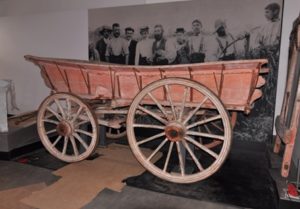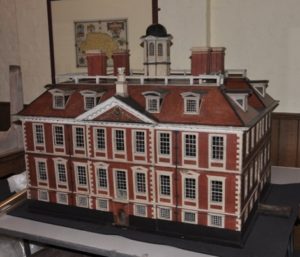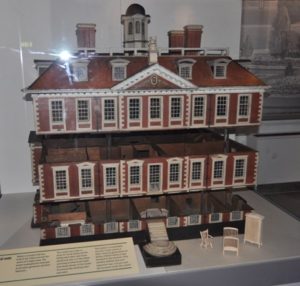July 2016
The conservation department has been involved at most stages with this phase of the project, to redevelop Gressenhall Museum and tell the story of its workhouse origins. From assessing object condition and conducting remedial treatments, to advising on display case specifications, environmental conditions and overseeing the handling and moving of large and awkward objects, it has been a diverse and rewarding project.
In considering object display options, each object will have had their own particular handling and mounting needs. The options will have taken into consideration areas of strongest support and areas of inherent weakness as well as optimum visual accessibility. However, for the larger outsize objects, such as the agricultural vehicles, a different emphasis is required.
The three vehicles in the new displays, with either wooden wheels or a wooden support axle, have over time, suffered from the continuous pressure of the vehicle’s weight bearing down. In turn, over many years, this causes the structural state of the wheels and axles to weaken.
Wood that is bearing a heavy load over a prolonged period, and under changing environmental conditions, can suffer from ‘compression set’. This is a permanent distortion of the cells that make up the microscopic structure of the wood, resulting in weakness at crucial points such as joints. Typically, the wooden wheels on a farm waggon will become rickety with age as compression set means that the spokes become loose in the hub mortices, and the felloes are loose on the spokes.
In order to minimise the long term damage caused by this, bespoke stands were created to alleviate the weight off the wheels.
A wooden wheeled farm waggon for transporting farm workers and other materials
Bespoke axle supports made from welded steel
Another large object which presented a very different mounting challenge was the impressive model of Melton Constable Hall. This model is made up of five separate layers, which when assembled, prevented the visitor from seeing into the intricate interior of the house.
Melton Constable Hall model
The challenge was to display the model so that the interior details could be seen, but without detracting too much from the overall appearance of the whole house.
Discussions between conservator and mount maker resulted in the creation of bespoke acrylic pillars installed in between the floors of the model to separate the layers, thus allowing the interior details to be seen whilst providing appropriate support.
The visitor can now appreciate so much more, the original purpose of the object as an architectural model, but also as a child’s dolls house which was its use for a significant period in its life.
The model with acrylic pillars in place
Follow NMS Conservation department on Twitter @ConserveNMS & Gressenhall Farm & Workhouse @GressenhallFW
Further information about Voices from the Workhouse and Gressenhall: Gressenhall Farm & Workhouse




